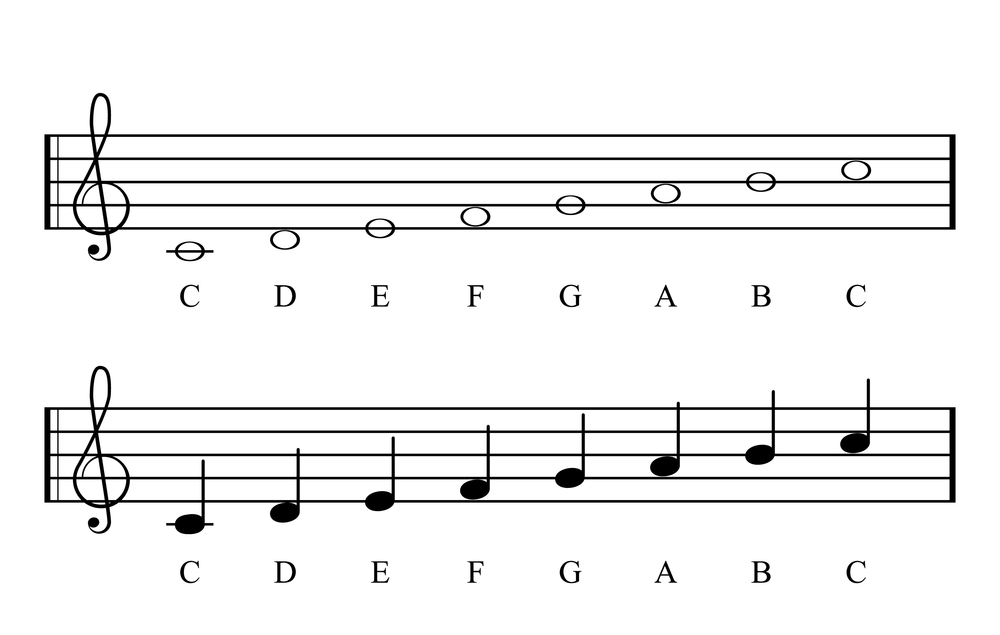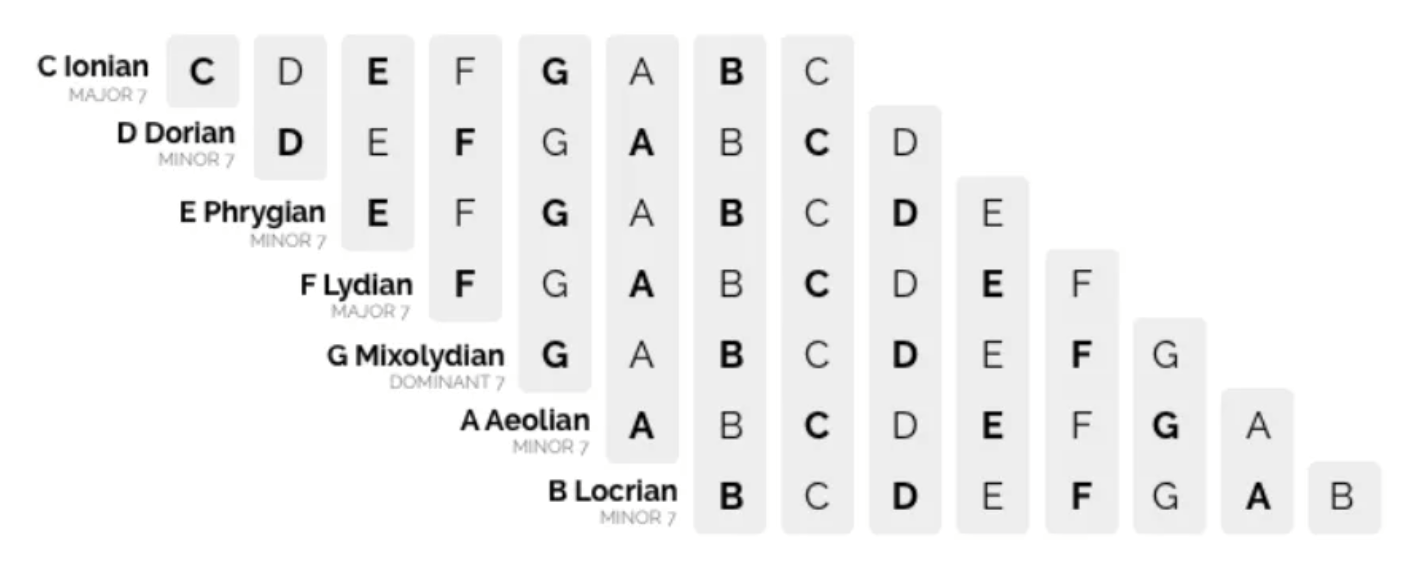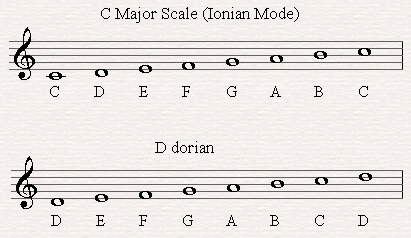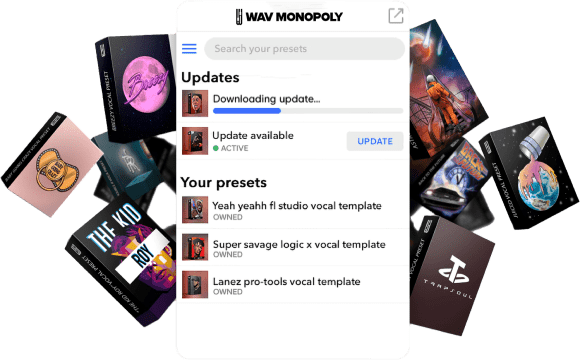LEARN MUSIC AND AUDIO PRODUCTION | Wavmonopoly TIPS AND TRICKS
The Major Scale: Everything You Need to Know

wavmonopoly June 5, 2022

The Major Scale is one of the most important scales in music. It is used in a variety of styles, from classical to jazz to rock, and even Rap genres. In this article, we will discuss what a Major Scale is, how to form it, and some of the ways that you can use it in your music.
We will also take a look at the Major Scale vs Ionian Mode, and overview all of the Major Scales. So whether you are just starting out learning about scales, or you are looking for more information on Major Scales, this article is for you!
What is a Major Scale?

A Major Scale is a seven-note scale with a specific pattern of whole and half steps. The first, third, and fifth notes of the scale are called “tonic,” “supertonic,” and “dominant.” The tonic is the starting note, while the supertonic and dominant are each a whole step above the tonic.
The second, fourth, and sixth notes of the scale are called “submediant,” “mediant,” and “subdominant.” Each of these notes is a half step above the note before it. The seventh note of the scale is called the “leading tone” because it leads back to the tonic.
All in all, You can remember the order of the notes in a Major Scale by using the mnemonic “Every Good Boy Deserves Fudge.” This stands for E-G-B-D-F.
How do you Form a Major Scale?
A Major Scale is formed by starting on the tonic and then moving up in whole steps and half steps. The pattern is whole, whole, half, whole, whole, whole, half. The formula is defined as:
W – W – H – W – W – W – H
We can create a major scale starting on any note by using this combination of intervals. Let’s give it a try.
For example, if we wanted to form a C Major Scale, we would start on C and then follow the pattern. The notes in a C Major Scale would be:
C – D – E – F – G – A – B – C
It’s that easy! Now let’s try forming a major scale in another key.
Building major scales in other keys
When building a major scale in another key, we just need to start on the note that corresponds to the key. For example, if we wanted to build an F Major Scale, we would start on F and follow the same pattern.
Let’s take a look at the D major scale’s primary scale.
Start on D, and apply the major scale formula:
D whole step to E, whole step to F#, half step to G, whole step to A, whole step to B, whole step to C#, half step to D.
It’s important to remember that this is something you’ll have to practice. It will take some time for you to get used to it, especially if you’ve never done it before. As time goes on, you’ll become more comfortable with it.
You’ll begin to feel it becoming more natural as you continue. This information will be easier for you to apply to other areas of music as well.
Modes of the major scale

Now that we know how to build a major scale, let’s talk about modes. Modes are different ways of playing the same scale. Each mode has a different sound, and they can be used in different ways.
Breaking down each of the modes
There are seven modes of the major scale: Ionian, Dorian, Phrygian, Lydian, Mixolydian, Aeolian, and Locrian.
- Ionian is the first mode, and it is the same as a major scale. This mode is used a lot in classical and pop music.
- Dorian is the second mode, and it has a minor sound. This mode is often used in jazz and blues.
- Phrygian is the third mode, and it has an exotic sound. This mode can be used in a variety of genres, from metal to classical.
- Lydian is the fourth mode, and it has a bright sound. This mode is often used in pop and rock.
- Mixolydian is the fifth mode, and it has a bluesy sound. This mode can be used in genres like jazz and blues.
- Aeolian is the sixth mode, and it has a dark sound. This mode is often used in metal and rock.
- Locrian is the seventh mode, and it has a dissonant sound. This mode can be used in a variety of genres, but it is used sparingly because of its unsettling sound.
All these modes can be derived from the major scale. To do this, you just need to start on a different note on the scale.
For example, if we wanted to play the Dorian mode, we would start on the second note of the scale. In the key of C, this would be D. The notes in a D Dorian mode would be:
D – E – F – G – A – Bb – C – D

As you can see, the notes are the same as a C major scale, but we started on D. This gives it a different sound. The same can be done with any of the other modes.
Major scales in music
There are many songs that use major scales. For instance, “Somewhere Over the Rainbow” by Israel Kamakawiwo’ole is a good example. This song uses the C Major Scale.
If you listen to the song, you’ll notice that it has a happy sound. This is because of the major scale that it uses. There are 12 major scales, and each one has a different sound.
This is why it’s important to know how to form them. It will allow you to create different sounds and write better songs.
Now that you know all about the major scale, put your knowledge to the test! Write a song using one of the major scales. Experiment with different modes and keys. See what sounds you can create.
The Major Scale is a tool that every musician should know how to use. With this knowledge, you’ll be able to write better songs and experiment with different sounds. So get out there and start practicing!
How to practice Major Scales
One of the best ways to practice major scales is to use a metronome. Start by setting the metronome to a slow tempo, such as 60 beats per minute.
Play each note of the scale slowly and evenly. As you get comfortable with the scale, you can increase the tempo of the metronome.
You can also practice major scales by ear. Start by humming a note, and then try to find the note on your instrument.
Once you’ve found it, play the rest of the scale. If you get stuck, you can always refer back to our previous lesson on how to form a major scale.
Another way to practice major scales is to improvise. This means making up your own melodies using the scale.
You can start by playing a simple melody, and then add embellishments as you get more comfortable. You can also try improvising in different keys and modes.
The best way to learn anything is to practice it regularly. So make sure to set aside some time each day to practice your major scales. Soon, you’ll be writing better songs and improvising like a pro!
